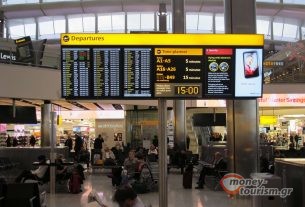The China Trading Desk survey, which sampled 15,000 Chinese travellers and is conducted quarterly, shows that Chinese people are now using social media to decide where and how to travel abroad. These social media and some similar travel apps are CTrip and Qunar but also Xiaohongshu and Douyin, the Chinese counterpart to TikTok.
China Trading Desk founder and CEO Subramania Bhatt said: “Our report shows that travelers are not just using apps and social media to plan trips but also plan shopping excursions once they reach their destinations. This digital integration extends into the realm of shopping, where platforms like Xiaohongshu and Douyin play pivotal roles in shaping travel itineraries and experiences”. 40% of all Chinese travelers plan trips using these sites, there is a clear preference among travelers aged 18 to 29 for Xiaohongshu, which has been called “China’s Instagram.”
The survey showed that two-thirds of outbound travelers were under the age of 30, and nearly that many were women, while those ages 40 and above accounted for just 9% of outbound travelers. “These young travelers use social media to learn about destinations, and then they book without excessive planning. A large number are young, female and educated. And many are traveling solo” highlighted Bhatt.
Before COVID, China sent more travelers into the world than any other country, with 1-in-9 international visitors carrying a Chinese passport in 2019. While three years of a zero-tolerance approach to the pandemic all but snuffed out China’s international travel, the China Trading Desk report suggests 2023 signaled a turnaround that’s likely to escalate.
“Before the pandemic, travel was embedded in the ideal of modern lifestyles among urban Chinese – and, after a slow start in 2023, we see this re-emerging and growing,” he said. “Travel demand patterns are unlikely to fully ‘normalise’ in 2024, but by the end of the year any objections will have been minimised.
Generation Z and younger millennial women are driving much of this demand. The new report found that 62% of outbound travellers were female, while 39.5% were between the ages of 18 and 24 and 27.4% were between 25 and 29. And nearly 70% of travellers booked tickets less than a month ago, suggesting a move towards spontaneity.
Bowerman, a Phocuswright research analyst specializing in the Asia-Pacific region, called that one of the key trends to watch this year, as domestic travel and tourism in China have evolved and diversified considerably over the past four years.
“Chinese destinations have become more adept at understanding the aspirations and expectations of Chinese travelers who want to see more of their own country,” he said. “High-speed rail and self-drive travel are more widely available and more smartly marketed via social media as intrinsic elements of the domestic trip experience. They also give travelers more control over their own itineraries.”
Yet the sheer vastness of the market leads Bowerman to conclude demand will be great enough to see strong growth in both domestic and outbound travel this year.
Its first quarter survey found that Singapore maintained its title as the top destination for Chinese travelers, with more than 15% of all outbound travel. Thailand was next with 13.6% followed by South Korea at 12.4%. In the same time, “Chinese [online travel agencies] talk about a ‘four-to-five-hour flight radius’ as the primary market for flight sales, and that makes absolute sense – given the majority of Chinese travelers take relatively short trips [less than a week] often focused around public holidays,” Bowerman said.
He also noted that Southeast Asia countries promote visa-free access for Chinese travelers — something they lack when trying to visit the United States or Europe. That contributes to the muted interest in travel to the U.S., where only 4.2% of outbound travelers visited in the first quarter, according to the China Trading Desk report. Europe saw 10.6% of outbound travelers.
“A major issue in 2023 for European travel was backlog in processing visas for Chinese visitors. Gradually, both issues will ease, as travel is recognized globally as a vital driver of economic activity in a fragmenting and fractured world. That said, it would be a major surprise if the U.S. or [European Union] were to offer visa-free access for Chinese travelers.” said Bowerman. 




